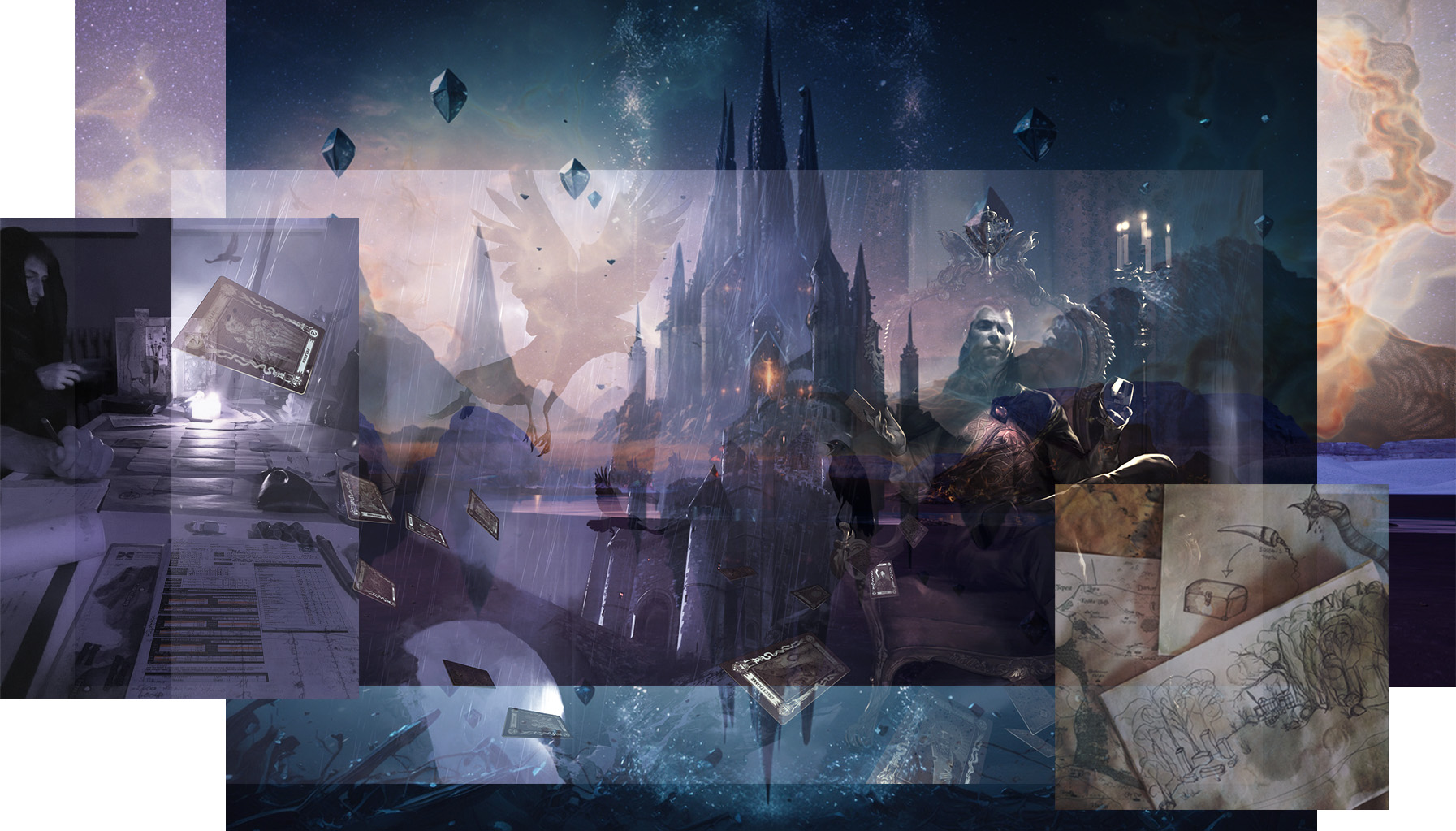D&D and the Metaverse(s)
It’s on everybody lips: metaverse; a term that is becoming more and more popular but its’ precise meaning eludes even field experts. Supposedly a single shared virtual space, the current version of the metaverse is shaping up as a multiverse: a multitude of metaverses with limited interoperability. As companies compete for position in the market anything from a video game to a Virtual Reality (VR) concert application counts as a ‘metaverse’. Some take it even further, calling the collection of various metaverses a ‘multiverse of metaverses’ or maybe it would be more accurate to say that we are living in a ‘hybrid-verse’. But let’s take a few steps back and see how we arrived to all this.

It was Neal Stephenson who invented the word in his science fiction novel Snow Crash, published in 1992, in a world not unlike the one we are living today, where humans interact with each other in a virtual 3d space, an evolution of the classic internet. The realisation of such an online community became for many people a reality in 2003 with the introduction of Second Life (undeniably a fitting name) a computer game where you can be -almost everything- you imagine1. Video games have expanded their internet presence since then, creating diverse online communities akin to the original concept of the metaverse. There, people can meet and exchange information, but also commodities that correspond to real monetary values2 related to diverse economic systems. With the advent of cryptocurrencies and blockchain these transactions are easier and more secure, decentralising ownership and information thus paving the way to real expressions of metaverses around the net.
We know that our world evolves around commerce and it feels at times that everything else exists just to serve that bigger purpose. Consequently, most of these metaverses are becoming enlarged marketplaces where people are encouraged to find new ways to consume products that they don’t necessarily need, especially since they exist only virtually. On the other hand, I am convinced that many of us, even though we live within the fabrics of human society with its’ intricate commercial connections, are driven in our choices and interests by other reasons as well. Reasons that come from simple good old curiosity and the yearn for knowledge that makes people imagine, discover and create amazing things. Metaverses can be both and more. But let’s explore things from a different a perspective.
The etymology of the word metaverse comes from the Greek meta (μετά) meaning after/beyond and the Latin universe (which in turn derives from the word universum, that is all things as one, as a whole -from uni, one and verse meaning turn(ed)/direction). In other words, ‘metaverse’ stands for another or an alternate universe beyond the one we experience directly through our senses. As a matter of fact the word fits quite nicely with the experience/concept that it describes. If one though thinks a bit further it is easy to see that this word can be used to describe diverse situations where each one of us experiences different kind of ‘universes’, all within the one we collectively3 perceive and physically live in.
Let’s think for a second the worlds we can create in our minds. Each one of us can imagine incredible things (maybe not formed in a precise manner but incredible nonetheless) putting together her past experience and inventiveness. Now let’s think about the experiences of the worlds and scenarios that we create while dreaming. We are undoubtedly the protagonists (and if not, certainly fellow participants) of our dreams in a world of endless possibilities that we subconsciously create. These dreamy metaverses can take many forms, and more than once, they surprise us with their originality and imagery that often goes beyond what we could conjure during our conscious hours. Having said that, dreams are not experiences that we can choose to enter consciously or even at times be aware of participating in. Other instances, like books for example, are also able to evoke -and once more with the help of our minds- create amazing worlds and experiences that we can feel part of. The genre of Fantasy Books is especially suited for such instances since more often than not they describe with amazing detail alternative worlds to our own, as result of a meticulous world-building process done by the author. Such level of detailed construction enables the reader to transport herself within that realm creating at times a proper metaverse experience. It so happens that if the book is compelling enough we identify with the characters that constitute the story, creating within our minds the experiences in distant alternate universes. There are numerous examples in literature of imaginary places4 and among these, there are even worlds within worlds with characters that are able to transcend the limits of each of the universes in which they apparently exist. A striking example is that of Michael Moorcock’s Eternal Champion, a being that exists in different forms throughout the Multiverse that connects and constitutes the author’s books. In such an example the main character (and the reader along with it) assume different identities in equally different worlds not very much unlike each one of us in different experiences of metaverses. Taking now this metaverse-like experiences a step further, from the worlds of fantasy novels one easily arrives with ease to the world of Fantasy Role-Playing.
Role playing can take many forms within diverse contexts (I know what some of you might be thinking…) but the one I am referring to is best known as the world of Dungeons & Dragons (D&D). A (brand)name that originates in the 70’s as a result of a group of people playing and consequently writing the rules for a game inspired by epic fantasy books like ‘Lord of the Rings’ or the books of Moorcock mentioned above. The starting point was the use of miniature figures to represent combatants, with the game gradually evolving to the point where the rules described the mechanics of an entire world and the players within it. Each one of them plays a character free to act as she pleases while one of the players acts as the Dungeon Master (DM): the director of the game that prepares the setting and describes to the players what they experience. The rest happens inside the minds of each player since during the game the players recreate the scenes that transpire with the help of their imagination, guided by the DM’s descriptions as the game unfolds. One can think of it as being one of the protagonists of a film where instead of following a script one invents it herself, together with the other leading actors. All you really need to play D&D is a book (the Player’s Handbook), a pencil and some dice5. There are of course, infinite supplements that have specific rules, lists of spells & abilities, lists of monsters and above all books that describe different worlds (metaverses). These elaborate metaverses can be anything from fantasy worlds filled with sorcery and swordsmanship, to science fiction worlds of technology and alien races. There are even worlds based on authors that described other universes like Lovecraft’s Call of Cthulhu, while others are inspired by history adding the supernatural and creating thus alternative universes to our own. D&D’s rising popularity coincided with the advent of the first more elaborate computer games and it naturally influenced the sector creating the PC role playing games and consequently, with faster internet speeds, the Massively Multiplayer Online Role-Playing Games (MMORPG). With them the era of metaverses, as in their intended initial definition, had officially begun. Instead of elaborating on the role the likes of Ultima Online, Everquest or the World of Warcraft had on the advent of metaverses it is important to stress the fact that almost all of them are an evolution of the classic role playing games like D&D. Having said that there is a distinctive difference that we touched briefly upon earlier: the player’s involvement. Throughout the years online video games have continuously improved giving the player more choices, creating a more engaging graphic experience and overall making what is called open ended worlds -that is games where you don’t have to follow a pre-determined storyline but are free to explore the world interacting with several elements within it. Most contemporary MMORPG allow players a high degree of freedom and the same happens to various other online games of different formats (like Co-op Shoot’em ups, Battle Royale, etc.) with the most popular ones becoming the basis for what we understand today as a metaverse. Some of these world scenarios even allow players to contribute in the construction of the world itself providing them with the building modules to assemble and create almost anything the wish to with some of these constructions being functional parts of the experience for all the players to enjoy. All these metaverses have in common a world scenario, which can take many forms also within the metaverse itself (thematic areas for example), interaction between the users through their avatars and a certain degree of interaction with the environment itself depending on the focus of the particular metaverse.
As humanity advances its’ technological output these metaverses will become more responsive and open ended with the help of Artificial Intelligence (AI) programming that will be able to generate in real time reactions to the players actions within the environment. The truth is that as of now no one knows how this virtual spaces can evolve but we can imagine various plausible scenarios. Without going to much on the subject of AI technology and the changes it brings to our way and perception of life, metaverses are in their foundation constructs for humans, created by humans, where they can experience the thrill of being in another reality, that is another universe. Unfortunately their advancement is linked to that of the global market, but their basic idea reflects humanity’s need to imagine itself beyond the mortal shell. A metaverse though should be much more than a virtual world based on algorithmic relationships between elements optimized to serve commercial functions. It should be instead a world of imagination where entities (human or not) can interact in a meaningful way based on mutual creation and genuine interest. The traditional methods of storytelling achieve that to a very good point having the person involved engaged actively in the creation of the alternate reality that she wishes to experience. The D&D genre especially is nowadays in my opinion the most successful way to achieve such a sense of belonging into another universe -a metaverse- since it is the method that utilises equally the creator’s imagination with that of the player. One can argue that the degree of satisfaction and experience that she gets is relative to its own capacity to imagine things and get involved in the context presented, but I would say that this is exactly where the heart of the issue lies. The key that allows us to experience a true metaverse is none other than our own capacity to be actively involved in its creation while we are partaking in the experience. As old school as it may sound I believe that we should embrace this kind of thinking if we do not want to experience our involvement in future metaverses as simple automatons that roam the endless vastness of commercial worlds ran by AI programs. If we are unable to place our imagination within the future worlds we are creating in a participative manner then there will be nothing else for us to do apart from selecting the option that will alleviate more our sense of boredom. My advice is that we should all play more role playing games inventing magic and mystery around each and every corner, creating thus each one of us his very own metaverse while sharing it with others. Long live d20!
1 A due mention goes here to Habitat, the very first large scale Online Role Playing game back in 1986(!), much ahead of its time which even though it had a short life (due to the graphic limitations and internet connections of that period) set the foundations for what followed in the video gaming industry coining also the term ‘Avatar’ for the in-game characters that players control.
2 As a matter of fact money itself is a virtual object in its essence since it is a social convention that renders a piece of paper valuable beyond its’ material worth. In that sense virtual money is not unlike ‘real’ money since it is simply an attribute that a group of people agrees on and accept in their transactions. Think of credit cards and bank accounts; the largest part of the world’s money exists only as accounting numbers which are transferred between computers. Consumers simply use a plastic card or their phone to electronically transfer such money to and from their bank accounts, without the use of actual currency.
3 One can argue (and very reasonably so) that each one of us experiences the world in a different way thus creating her own (perception of the) world, her very own metaverse which simply is her interpretation of the universe we live in.
4 An excellent guide to this never-ending subject of fictional worlds is Manguel’s & Guadalupi’s book ‘The Dictionary of Imaginary Places’ that collects more than 1,200 lands invented by storytellers from Homer’s day to our own.
5 Actually there are 7 types of dice used in contemporary role playing games depending on each game’s rules. Apart from the classic 6 sided dice players can use during the game a 4 sided, an 8 sided, two 10 sided dice -that together can also form a percentage score from 1 to 100-, a 12 sided dice and finally a 20 sided dice (d20) depending on the game mechanics and needs (for example different dice scores can represent different weapons’ damage). The dice are added to character scores that represent skills and abilities usually determining the element of luck within the game, with the d20 being the main dice used in many popular settings like the classic D&D.






